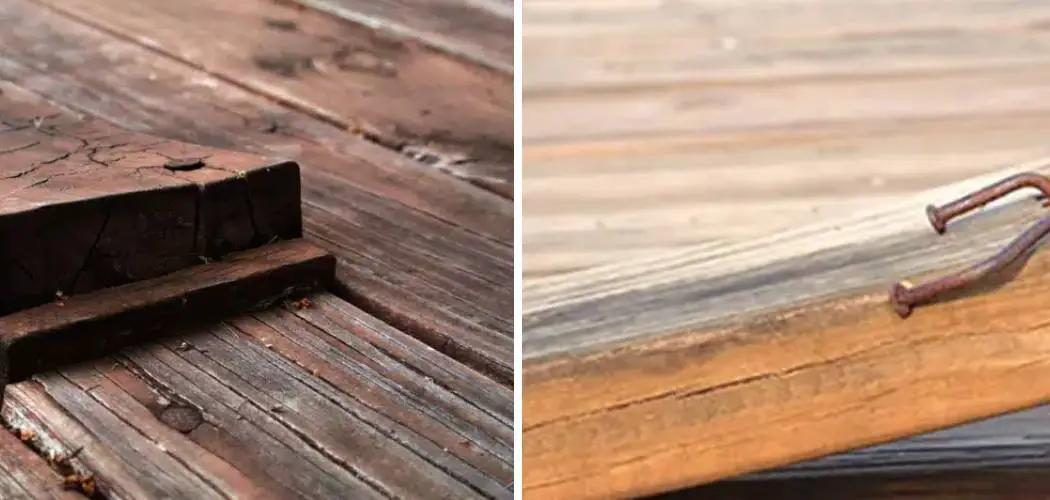If you’re having trouble with curled-up deck boards, don’t despair! You can easily fix this problem and get your outdoor living space looking great again.
In this blog post, we’ll explain exactly what causes deck boards to curl and provide simple step-by-step instructions for how to fix curled up deck boards so that you can enjoy your outdoor space worry-free.
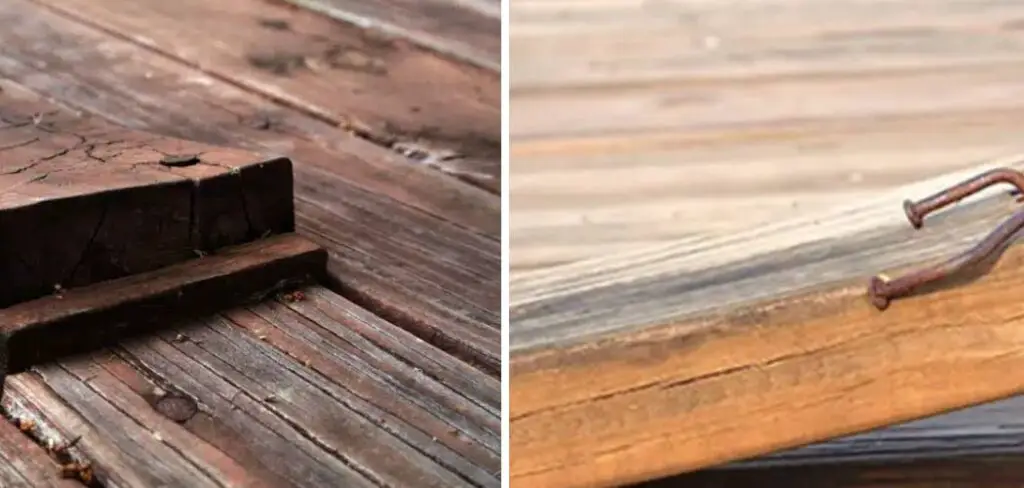
Whether it’s due to years of adverse weather conditions or improper maintenance, learning how to identify and address the issue is essential in ensuring your deck boards remain flat and straightened — no matter the circumstances. So let’s get started on putting those pesky curled-up deck boards back into place!
Tools and Materials You Will Need to Fix Curled-Up Deck Boards
- Hammer
- Nails or screws
- Drill
- Circular saw (optional)
- Replacement boards (if needed)
Step-by-step Guidelines on How to Fix Curled Up Deck Boards
Step 1: Identify the Cause of Curling
Before you begin fixing your curled-up deck boards, it’s important to know why they are curling in the first place. Some common causes include moisture damage, poor-quality wood, or incorrect installation. To determine the cause, inspect each board individually and make note of any noticeable signs of damage or defects. This will help you understand the root cause and take preventive measures to avoid future issues.
Step 2: Remove Damaged Boards
If the curling is due to damage or defects, remove the affected boards using a hammer and pry bar. Carefully lift the board from one end until it’s free from any nails or screws. If necessary, use a circular saw to cut the board into smaller pieces for easier removal. While removing the damaged boards, be careful not to cause further damage to the surrounding boards.
Step 3: Straighten the Curled Boards
For minor curling, you can try using a hammer and nails or screws to straighten the boards. Start by positioning the board in place and gently tapping it back into position with your hammer. Once in place, secure the board with nails or screws to keep it from curling again. For larger or more severe curls, use a clamp to hold the board in place while you secure it with nails or screws.
Step 4: Replace Damaged Boards
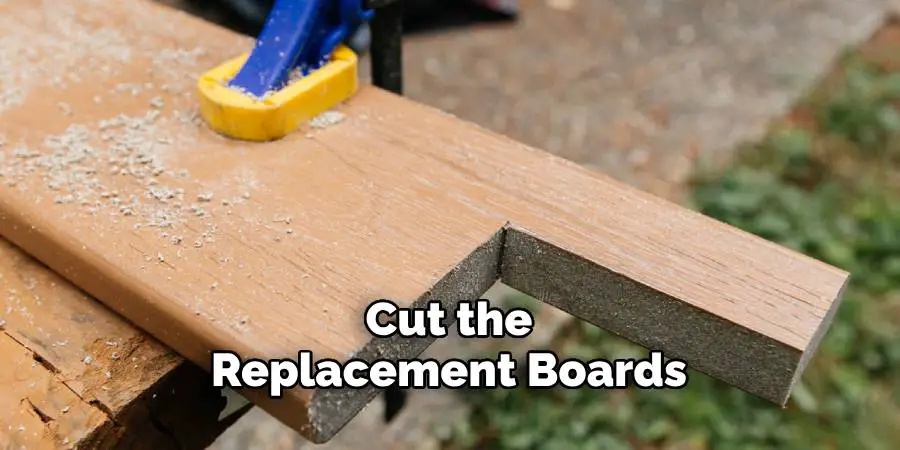
If the boards are too damaged to be straightened, replace them with new ones. Measure and cut the replacement boards to fit into the space left by the damaged boards. Use a drill to secure them in place with nails or screws. Replacing damaged boards not only improves the appearance of your deck but also ensures its safety and structural integrity.
Step 5: Sand and Seal
After fixing or replacing the curled-up boards, sand down any rough edges to give a smooth finish. This will also help prevent future splintering or curling. Then, seal your deck with a high-quality stain or sealant to provide added protection against moisture and weather damage.
Not only will this keep your deck looking great, but it will also extend its lifespan.
With these simple steps, you can easily fix curled-up deck boards and enjoy a beautiful and safe outdoor space once again. Remember to regularly inspect and maintain your deck to prevent future issues and ensure its longevity. Happy fixing!
Additional Tips and Tricks to Fix Curled-Up Deck Boards
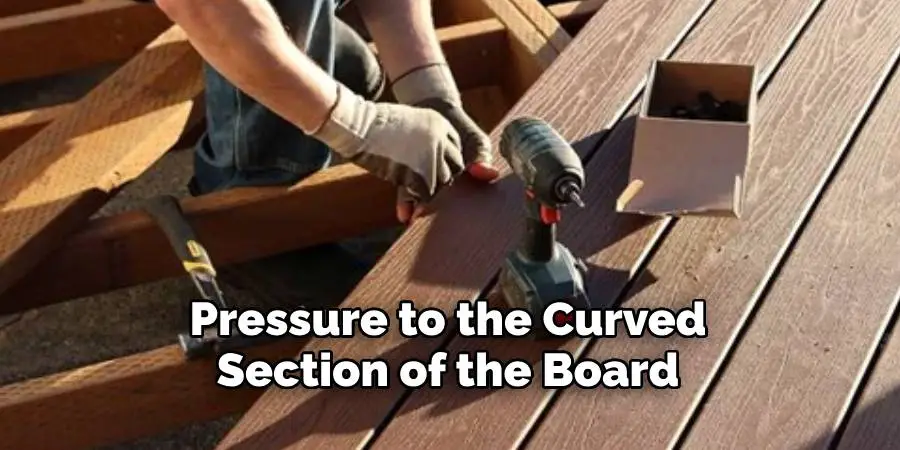
1. When replacing deck boards, try to use pressure-treated lumber. This type of wood is resistant to moisture and decay, making it less likely to curl up.
2. If your damaged deck boards are near the end of the board, you can cut off the curled section and reattach the remaining straight portion of the board using screws or nails.
3. For severely warped or cupped boards, you can try using a straightening tool such as a pry bar or a deck board straightener. These tools apply pressure to the curved section of the board, forcing it back into its original shape.
4. To prevent future curling of your deck boards, make sure to properly seal and finish them with a high-quality wood sealer or stain. This will help protect the wood from moisture and UV damage, which can lead to warping and cupping.
5. Regularly inspect your deck for any signs of damage or wear and tear, especially after harsh weather conditions. Catching and repairing curled-up boards early on can save you time and money in the long run.
6. If you live in a humid climate, consider using deck clips or hidden fasteners when installing your boards. These allow for more movement and expansion of the wood during times of high humidity, reducing the likelihood of curling.
7. When choosing new deck boards, opt for thicker and wider boards as they are less likely to warp or cup compared to thinner ones.
8. Properly spacing your deck boards can also help prevent curling. Make sure to leave a small gap between each board to allow for proper air circulation and movement of the wood.
9. If your deck boards are consistently curling even after trying these methods, it may be an indication of underlying structural issues. In this case, it’s best to consult a professional for further inspection and repairs.
10. Lastly, remember to properly maintain your deck by regularly cleaning it and removing any debris or standing water. This will help prevent moisture buildup and prolong the lifespan of your deck boards.
Following these tips and tricks can help you fix curled-up deck boards and keep your deck looking beautiful and sturdy for years to come. Remember, proper maintenance and prevention are key to avoiding costly repairs in the future. So be proactive and give your deck the care it deserves!
Precautions Need to Be Followed for Fixing Curled Up Deck Boards
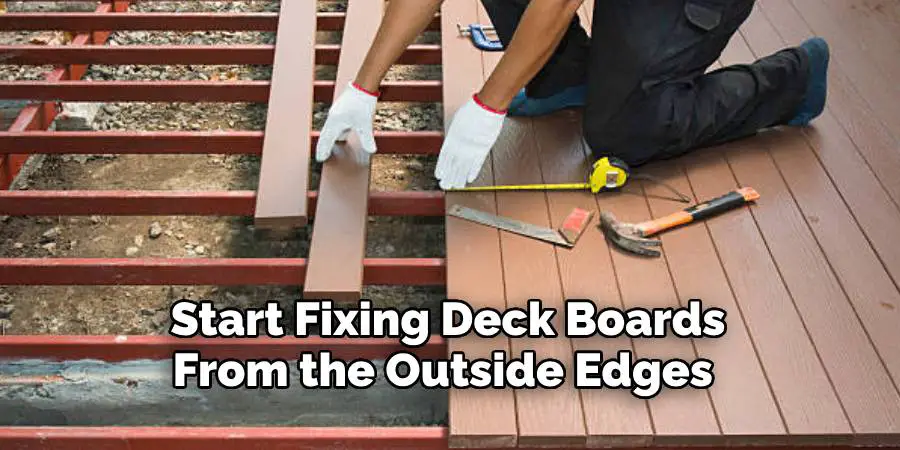
1. First and foremost, make sure you have all the necessary tools and materials before you start the fixing process. Some important tools that would come in handy are nails, hammer, drill machine, screws, saw, etc.
2. Before starting with replacing deck boards, it is crucial to assess the extent of damage caused to them. This will help in determining whether to replace the entire board or just fix the damaged portion.
3. While working with power tools, always remember to wear appropriate safety gear such as goggles, gloves, and earplugs.
4. It is recommended to start fixing deck boards from the outside edges towards the center of the deck. This will help in creating a more even and symmetrical look.
5. Carefully remove any remaining nails or screws from the damaged boards before replacing them. This will ensure a better fit for the new boards.
6. When selecting replacement deck boards, make sure to choose ones that are similar in size and type to the existing ones. This will help maintain consistency in the appearance of your deck.
7. If you are using pressure-treated wood for your deck boards, it is important to let them dry completely before installation. This will prevent any warping or cupping of the boards in the future.
Following these precautions will not only ensure a successful fixing process but also help in maintaining the overall integrity and safety of your deck. It is always better to take necessary precautions beforehand rather than face consequences later on. So, make sure to follow these tips while fixing curled-up deck boards for a long-lasting and visually appealing result. Happy repairing!
Frequently Asked Questions
What Causes Deck Boards to Curl Up?
There are several reasons why deck boards may curl up. One of the most common causes is moisture imbalance. Wood, being a natural material, is prone to expanding and contracting depending on the level of moisture in its environment. When one side of the deck board gets wetter than the other, it can cause the board to warp and curl up.
Other factors that can contribute to this issue include age and poor installation. Over time, the wood may become weakened and more susceptible to warping. Improper installation, such as not leaving enough space between boards for expansion, can also lead to curling.
How Can I Prevent My Deck Boards from Curling Up?
The key to preventing deck board curling is proper maintenance and installation. Regularly sealing your deck will help prevent moisture from seeping into the wood and causing it to warp. Additionally, when installing deck boards, be sure to leave a small gap between each board to allow for expansion and contraction. This will help prevent stress on the boards and reduce the likelihood of warping.
How Do I Fix Curled-Up Deck Boards?
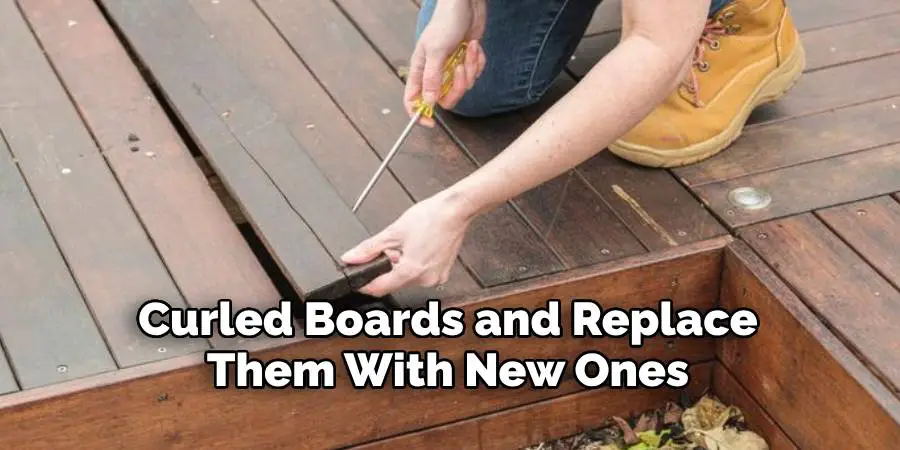
If your deck boards are already curled up, there are a few methods you can try to fix them. One option is to use a heat gun or steam iron to soften the wood and then gently bend it back into place. This method should only be used on minor curling and caution must be taken as excessive heat may cause damage to the wood. Another option is to remove the curled boards and replace them with new ones. This may require professional help and can be more expensive, but it is a sure way to fix the issue.
Conclusion
Now you know how to fix curled up deck boards and prevent this issue in the future. Remember to regularly maintain your deck and be mindful of proper installation techniques to keep your deck looking its best. If you do encounter curled-up boards, try one of the methods mentioned above or consult a professional for help. With proper care, your deck can provide years of enjoyment without any curling issues. Happy decking!

